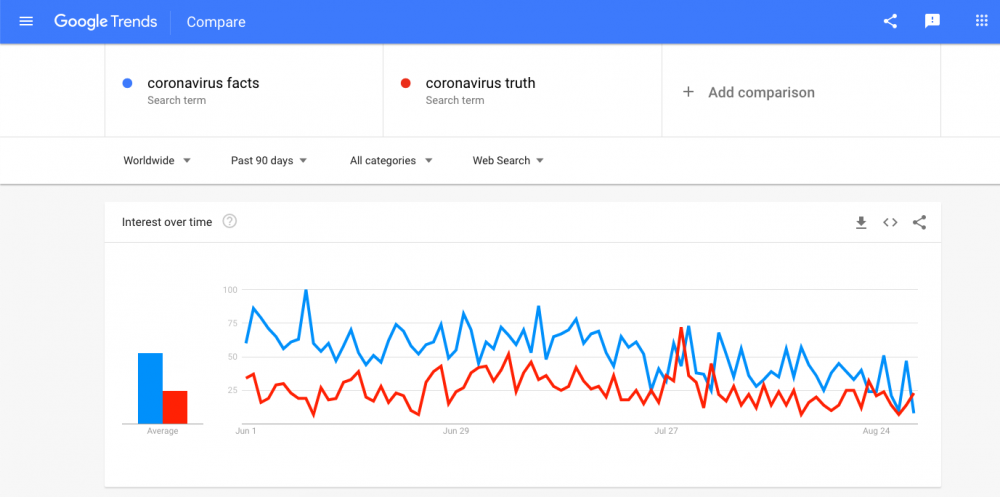At first glance, there seems to be very little difference between facts and truth. But going deeper into the linguistic characteristics of these two words and how people seek information online shows that there is a fundamental difference between searching for facts and truth, such as “coronavirus facts” and “coronavirus truth”. This is quite crucial when trying to understand how disinformation tactics manipulate people’s urge to simply know.
As Cory Doctorow, tech journalist and activist on liberalising copyright laws, states “we’re not living through a crisis about what is true, we’re living through a crisis about how we know whether something is true”.
The choice of using the word “fact” over “truth” or vice-a-versa means a lot and search engines bring drastically different search results when the two ways of seeking information are used. Algorithms apply many variables to cause this shift, but let’s first look at the trends.
Google Trends, a website by Google that analyzes the popularity of top search queries in Google Search across various regions and languages, shows how people’s interest over time has shifted from seeking facts to seeking truth.
 Screenshot from trends.google.com as of 01/September/2020
Screenshot from trends.google.com as of 01/September/2020
Looking at Google’s search trends over the last 90 days, it is seen that the dominant interest in “coronavirus facts” diminished and is now searched less compared to “coronavirus truth”.
What Does That Mean?
William Dance, a PhD researcher and associate lecturer at Lancaster University specialising in corpus linguistic approaches to media deception/manipulation, has found that people engaging with disinformation are more likely to use words related to the truth, such as disingenuous; nonsense; false; charade; deception; concealed, disguised, hiding, show; find; reveals; exposes; uncovers. This is a huge revelation when understanding how manipulation is feeding from people’s urge to know and how linguistics is a manifestation of it.
As Tommy Shane, First Draft’s head of policy and impact, comments on this notion:
"People engaging with false news stories are not disinterested in truth, but are hyper-concerned with it — especially the idea that it’s being hidden."
Same set of information can be presented in countless ways online. But people searching for the same information can also use countless different ways to find it. Their beliefs are mostly leading them to make certain choices and disinformation tactics usually manipulate people over their beliefs. Exploring these differences, understanding people’s choices can tell us more about manipulation in action and tools like Google Trends can show us how behaviours shift over time in seeking knowledge.